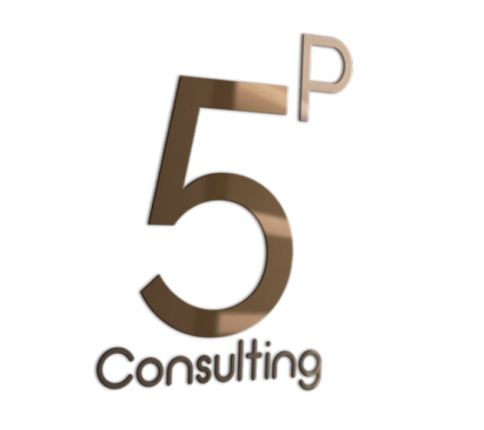 In today’s fast paced business world having the ability to make quick decisions, reporting metrics and closing sales is key to increasing revenue. There is a big focus on technology to empower companies to run efficiently. If you’ve talked to me, you know it’s not about the ‘tool/product’ it’s about the business problem you’re trying to solve, goals and repeatable process.
Business applications running in the cloud are core to any size company. You need business processes and a technology stack to run your financials, sales, inventory, projects, human resources, customer and vendor activities.” Why?”, you might ask. The answer is simple; business applications give you the transparency necessary to effectively run your business and manage operations. The results save you money, cycle time and get your product/service in your customer’s hands as quickly as possible. This results in a better brand, repeat business and employee retention.
In the typical business application world, you often hear acronyms like CRM, ERP and HCM. As you work in healthcare, pharma, manufacturing and non-profit an additional suite of systems becomes helpful to manage the uniqueness of your business model (EHR, PM, MES). In this blog I’m focusing on CRMs, ERPs and HCM business applications.
In today’s fast paced business world having the ability to make quick decisions, reporting metrics and closing sales is key to increasing revenue. There is a big focus on technology to empower companies to run efficiently. If you’ve talked to me, you know it’s not about the ‘tool/product’ it’s about the business problem you’re trying to solve, goals and repeatable process.
Business applications running in the cloud are core to any size company. You need business processes and a technology stack to run your financials, sales, inventory, projects, human resources, customer and vendor activities.” Why?”, you might ask. The answer is simple; business applications give you the transparency necessary to effectively run your business and manage operations. The results save you money, cycle time and get your product/service in your customer’s hands as quickly as possible. This results in a better brand, repeat business and employee retention.
In the typical business application world, you often hear acronyms like CRM, ERP and HCM. As you work in healthcare, pharma, manufacturing and non-profit an additional suite of systems becomes helpful to manage the uniqueness of your business model (EHR, PM, MES). In this blog I’m focusing on CRMs, ERPs and HCM business applications.
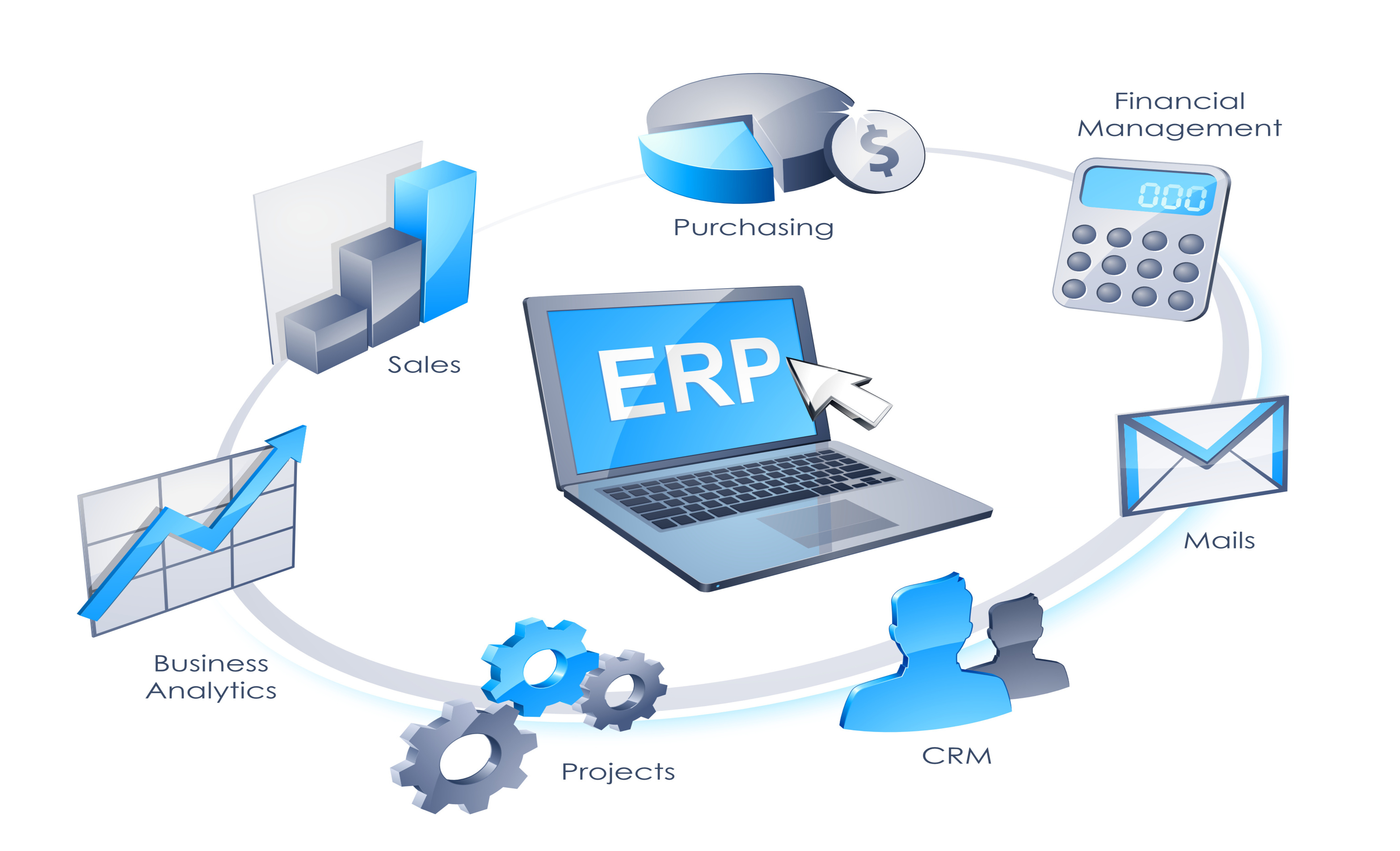
Image usage: https://smejoinup.com/
For starters, what do these acronyms really mean?
What is a CRM system? A CRM is a Customer Relationship Management system. It’s a term that refers to the strategies, executable business processes and technology that a company uses to nurture sales and their customer interactions. The benefit of having a CRM is managing the touch points involved in sales, customer interactions, data and retention in a single system or record so you can have transparency of data and move the business needle. Transparency of data provides answers like where is my sale today? Is it still at the prospecting stage? Have I sent a proposal? Is it closed and now a project? From the customer journey you’re able to see what stage your customer is at such as pre-sales, closed won with details on what was sold, where they have projects, operations or opportunities for continuous improvement. Customer Information and Sales Data:- Accounts and contact information
- Prospects vs. Leads
- Sales opportunities weighted by stage
- Contract management for pre-sales or closed business opportunities
- Customer data and product lifecycle
- Service management for customer ticketing
- 3rd party ecosystems to integrate your financials and projects
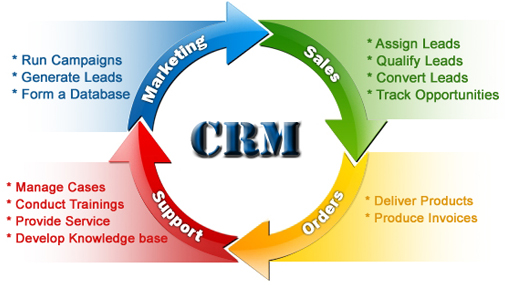
Image usage: http://www.xidisk.com/
What is an ERP system? An ERP is an Enterprise Resource Planning system. ERP’s focus on bringing productivity and data across the company to produce faster operations and financial results for your business, recognize revenue, and maintain financial compliance. An ERP is a core business system every business should have in place as one of the first pieces in their tech stack. It provides transparency to how you’re spending and collecting money. This allows for understanding of your current spend, unpaid product/services, compliance risk and ultimately the decision to ramp up or down based on revenue. If you don’t have this in place, it would be extremely difficult to determine when to scale up to meet customer demand or to downsize costs based on economic trends. Financial and Customer Data:- AP, AR, GL
- Payroll
- Actuals & forecasting
- Sales and purchase orders
- Customer invoicing
- Other: Backlog, Commissioning, Compliance
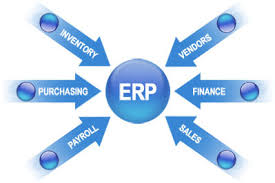
Image usage: http://linkedin.com
What is an HCM System? An HCM is a Human Capital Management system. You’ll often hear other acronyms such as HRIS (Human Resource Information Systems), HRMS (Human Resource Management Systems. Despite the differing acronyms, all three describe the same business processes or systems: A suite of software and data which provide an all-encompassing solution for managing every aspect of your workforce. HCM systems support the talent management process, onboarding and nurturing of the employees in your organization. Employee, Learning and Compliance Data:- Employee and applicant contact information
- Recruitment planning
- Employee pay including salary, bonus, overtime and commision
- Time tracking and employee expenses
- Employee benefit tracking
- Employee goals and reviews
- Employee growth
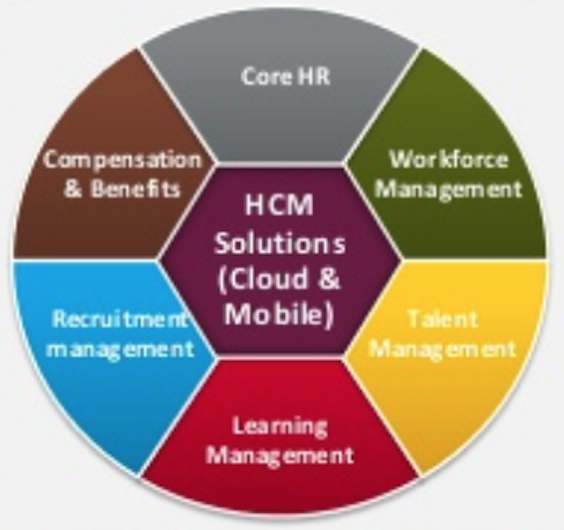
Image usage: https://www.capgemini.com/consulting/
Each of the processes and systems have a powerful position as ‘stand alone systems’ in your business. I highly recommend you have these in place to get operations out of email and into something you can track, measure, and maintain history. Most importantly, this provides the ability to automate the workflow process to execute quicker. Why integration? Where the beauty lies is the integration of these systems. Each of these systems have their own business processes and data but when you have them work together (integration through technology and data) they can show you powerful data to make full lifecycle decisions. For example just a couple impactful questions by area. This is not an exhaustive list:- How much time is my employee spending on ‘XX’ customer and how does this compare to what was scoped in the contract?
-
-
- This can help fine tune the sales estimation process reducing risk in providing effort against what was sold.
- This helps set expectations on scope with the customer and educate them on the impact of scope changes resulting in longer cycle time and product upsells.
- This helps you determine the sweet spot of skills for your team.
-
- What business have we sold but not started?
-
-
- This allows you to plan resources based on month or recruit where you have gaps.
- This allows you to forecast revenue recognition and determine gaps in financials and sales to meet your leadership goals. Or even adjust your business goals to be more aggressive.
-
- Where are opportunities to grow our product stack?
-
-
- You can see trends on what is being sold, what missed opportunities your not selling based on interest and tie that to how much it would cost to build out that competency with process, people and $s.
- You’ll see trends on how much it’s costing to resolve a customer’s ticket so you can get insight into their business and yours which provides good customer service, continuous improvement and retention.
-
- What is your customer journey?
-
-
- This allows you the ability to see how many interactions you have with your customer and what is valuable to them so you can provide proactive recommendations.
- This provides customer delight, retention and repeat business based on impact you are making for them and your team.
-
- What is your employee journey?
-
- This provides the ability to see how long it takes to recruit, onboard, day one readiness and growth into new organizational roles. This is not only helpful to figure out cycle time for operational and project activities but provides the cost associated to the process for business planning.
- This provides insight on roles, career growth, retention and company impact.
- If you have mature integration processes you can map employee engagement to customer engagement through net promoter scores.
 Image usage: https://www.capgemini.com/consulting/
Image usage: https://www.capgemini.com/consulting/
Y’vonne Ormond
Founder & CEO | 5P Consulting
People, Process, Products, P&L with priorities
